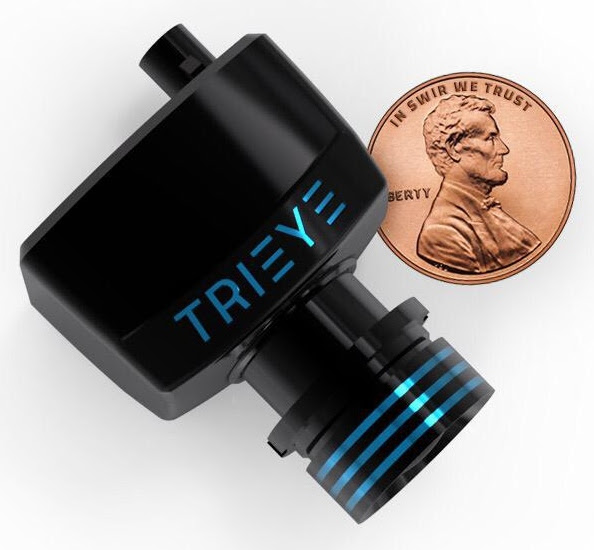The TriEye SWIR camera is not much bigger than a coin. Photo: courtesy
The South Korean group Samsung, Intel and Porsche have decided to invest in the technology of TriEye. The Israeli startup announced on November 12, 2021 that it has raised $74 million from these investors, among others. Fundraising led by Varana Capital and M&G Investments with also the participation of Tawazun SDF, Deep Insight, Allied Group and Discount Capital among others.
These are specialized funds to help accelerate the commercialization of its infrared sensor that enables advanced driver assistance systems (ADAS) and autonomous vehicles to “see” in deteriorated conditions. Detection is “a critical part of the collection and analysis process,” says Avi Bakal, CEO of TriEye. Currently, the vision systems market lacks vital data that can impact performance and decision making anywhere.”
The sensor TriEye is developing is called Sedar for “Spectrum Enhanced Detection And Ranging”. It uses shortwave infrared or SWIR, a range of wavelengths outside the visible spectrum that allows data to be collected under all visibility conditions, even the most deteriorated (fog, heavy rain, dense snow). This SWIR technology is not new, but it is expensive and usually used in the aerospace and defence sectors. TriEye explains that it was able to reduce costs by using a CMOS chip.
The sensor TriEye is developing is called Sedar for “Spectrum Enhanced Detection And Ranging”. It uses shortwave infrared or SWIR, a range of wavelengths outside the visible spectrum that allows data to be collected under all visibility conditions, even the most deteriorated (fog, heavy rain, dense snow). This SWIR technology is not new, but it is expensive and usually used in the aerospace and defence sectors. TriEye explains that it was able to reduce costs by using a CMOS chip.
Using SWIR technology and a proprietary light source, this sensor provides the imaging data and depth of information needed for ADAS and autonomous driving systems. The Israeli start-up claims to offer a new layer of information to in-vehicle systems and even believes that its sensor can replace all of the systems currently deployed in autonomous vehicles, which typically make use of a combination of cameras, radar and lidar.
For Intel, the investment in this nugget seems logical given the strategy of Mobileye, it’s subsidiary dedicated to autonomous driving. The latter develops ADAS and autonomous driving systems and is working on the deployment of robot cab services. In this context, its CEO Amnon Shashua emphasizes the redundancy of the onboard systems and the need to have both a system based only on cameras and another one working with radars and Lidar. The TriEye solution could complement the latter.
However, TriEye intends to appeal beyond the automotive sector. The start-up hopes to market its technology in industrial applications (food sorting, material identification, etc.) or integrate it with biometric and surveillance technologies.
However, TriEye intends to appeal beyond the automotive sector. The start-up hopes to market its technology in industrial applications (food sorting, material identification, etc.) or integrate it with biometric and surveillance technologies.



Comment here